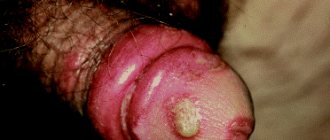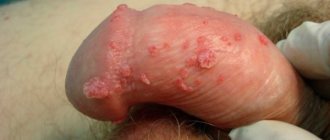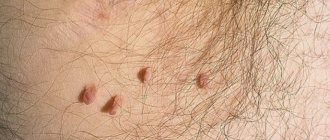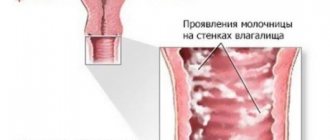The appearance of small neoplasms in the form of light pimples on the skin and mucous membranes of the human body indicates the development of Fordyce disease in the body. White dots convex above the surface of the epidermis - Fordyce granules - are considered a normal variant. Such formations in most cases do not cause discomfort, are not transmitted through any type of contact with the carrier and bother the patient only as a cosmetic defect.
They occur in girls during puberty and in women during hormonal disorders. Very often, white rashes on the labia are confused with symptoms of STDs or genital warts. That is why any pathological changes in the skin cannot be ignored. Neoplasms should be examined by a doctor to determine the cause of their appearance and prescribe effective therapy.
Reasons for appearance
Doctors cannot name reliable reasons for the development of this disease. The mechanism for the appearance of pearlescent granules is associated with obstruction (blockage) or narrowing of the ducts of the sebaceous glands.
The scientists whose names gave the name to the disease found a connection between the localization of the elements of the rash and physical (somatic) ailments: endocrine, urological and even infectious. Modern scientists also adhere to this approach. Taking into account the characteristics of our body and the development of pathology, contributing factors have been identified:
- Smoking. Bad habits contribute to many diseases, including this one.
- Poor hygiene. It is much easier for Fordyce granules to develop in an environment favorable to harmful bacteria.
- Puberty period. The so-called “transitional age” activates hormonal changes in the body. These, in turn, lead to the transformation of the sebaceous glands. Once it occurs during puberty, the disease can accompany a person for life.
- Individual predisposition and physiological characteristics. It is believed that in some people the glands are located abnormally close to the surface of the skin. And any obstruction becomes noticeable to the naked eye, like a pearlescent granule.
- Injury to the glands by mechanical action.
- Endocrine pathologies affecting the adrenal glands and thyroid gland. And women also have ovaries.
Dermatosis is provoked by metabolic disorders, leading to hypersecretion of sebum (sebum) and changes in its chemical properties. And skin functions (immune and biochemical) depend on the composition of sebum. The narrowing of the duct against the background of increased sebum production leads to the appearance of pearlescent granules around the hair follicle. And this causes a toxic effect and incredible itching.
Dysfunction of the gonads is indirectly confirmed by the fact that pregnant women spontaneously improve in the last third of gestation. And on the contrary, the clinic is aggravated outside of gestation (pregnancy) in the second half of the cycle, before menstruation, just during the period of hormone violence.
Modern dermatologists consider the most common trigger for the development of Fox-Fordyce disease to be trauma resulting from laser hair removal.
Varieties of Fordyce granules
The properties of the sebaceous glands can be divided by gender:
Pearly papules on the head of the penis do not threaten health and are not transmitted to a partner. Approximately 30% of men experience such features. This does not prevent them from living fully.
Pearly papules appear during the boy’s maturation and are associated with a large amount of androgens in the blood. Among peoples who practice circumcision of the foreskin, cases of rash on the glans penis are rare.
Morbus Fox-Fordyce is a pathology that is classified as a disorder of the ovaries and thyroid gland. Externally, these are small rashes in the armpits, navel, pubic area, perineum and other places. More often it occurs in girls under forty years of age. Much less common in adolescents and women during menopause.
There are 2 types of Fordyce granules:
- pearly penile papules;
- Fox-Fordyce disease.
Pearly penile papules are a normal variant. According to various authors, they occur in 30% of young men. They do not cause harm to health, are not sexually transmitted, and do not cause complications. In medicine, this problem has been little studied due to doctors’ lack of awareness of the presence of this manifestation. No effective treatment has been proposed.
The reason for the appearance of this type of Fordyce granules is also not clear. Some authors consider the cause to be excessive proliferation of the epithelium of the excretory ducts of the glands of the penis. Others are inclined to think about fibroplastic proliferation of areas of the epithelium of the glans penis.
Pearly penile papules appear during puberty and indicate a sharp increase in androgens in the blood. Among peoples who practice circumcision, the incidence of these papules is extremely low. This is due to the fact that an increased amount of secretion and smegma, which irritate the epithelium of the penis due to their physicochemical properties and cause fibroplastic proliferation (growth), is more easily released during hygiene procedures.
Fox-Fordyce disease is an analogue of pearly papules, only in women. Her clinic is absolutely identical to the clinic of pearly penile papules. The lesion is localized in the apocrine sweat glands and is associated (to some extent) with the genitourinary system. Endocrine origin is suspected.
In traditional medicine, there are two types of sebaceous cysts. In the first case, the granules are presented in the form of nodular papules. They do not result in painful symptoms and are not considered to require therapeutic intervention. Pearly papules often form on the labia, and in men - on the testicles (scrotal area) or penis.
By circumcising the foreskin, the likelihood of sebaceous spots forming on the glans penis is minimized. This is due to the fact that after circumcision the local number of sweat glands decreases. And those that remain easily remove sweat and are cleaned even during simple hygiene procedures (due to very thin skin)
The second type of granules is Fordyce's disease. A distinctive feature of the disease is that the rash is observed only in females. This is due to the anatomical structure of the urinary system.
Symptoms and signs
The main symptom of Fordyce's disease that worries the patient is itching (from mild to unbearable). The rashes are represented by flesh-colored nodules, similar to a cone. The elements do not merge, do not hurt and “gather” at the mouth of the glandular formations of the skin. The nodules are small, reminiscent of millet.
Figure No. 1. Mother of pearl granules
If the itching is severe, patients constantly scratch the epidermis; the following is observed on the skin:
- lichenification otherwise lichenization (thickening of the skin, strengthening of its pattern);
- bloody (hemorrhagic) crusts;
- changes in skin pigmentation;
- hair damage.
If the rash appears in the patient’s genital area, then in women the vaginal tissue is affected, and in men it is the skin of the scrotum and the foreskin of the penis. This type of pathology is divided into 2 types:
- Cosmetic defect - Fordyce granules appear in the area of the NAC (nipple + areola), armpits, around the navel or perineum - they look unsightly, and in addition are considered a sign of disruption of the endocrine glands, hormonal crises.
Figure No. 2. Fordyce granules in the SAC area
Figure No. 3. Rashes on the nose
Figure No. 4. Pearlescent “scattering” on the upper lip
- Perifollicular rash. This option causes a lot of anxiety and discomfort to patients due to disruption of sexual relations.
Figure No. 5. Rash on the skin of the penis
Fordyce disease has a long course with relapses, but sometimes resolves spontaneously.
Medicines
Drug treatment involves applying special ointments and gels to the area where granules accumulate. Usually the doctor prescribes medications such as:
- "Retin A".
- "Ayrol."
- "Lokacid".
From folk recipes, lotions with homemade ointment help well. To make it, mumiyo, honey and boiled warm water are mixed. This product is applied to the skin 2-3 times during the day, and then washed off with running water. The holding time of the medicine is 50-60 minutes.
Antiseptic ointments are prescribed only if the papules have been damaged or become inflamed. Here it is advisable to apply tampons with Vishnevsky ointment or Levomekol.
There is a common belief among the common people that alcohol helps get rid of the defect. Doctors say the opposite. The fact is that after treating the papules with alcohol solutions, the secretion begins to be produced in excessive quantities, and this leads to even greater blockage of the sebaceous glands.
Course of the disease by period
Medical science does not distinguish specific periods during the course of this disease. However, for your convenience, we can distinguish several stages:
- The function of the sebaceous gland is impaired.
- Nonspecific negative factors affect the patient’s body.
- The gland duct narrows, and over time the secretion completely clogs it.
As a result, pearlescent nodules are formed on the skin - Fordyce granules. Fordyce's nodes are not painful, but sometimes (especially if they are located on the genitals, such as the glans penis) they can become inflamed.
Growths on the head of the penis
CISS A7 Cherepovets, reviews of printers and MFPs
Many men suddenly discover strange formations on their genitals. However, don't panic right away.
Growths on the head of the penis are not always a symptom of any disease; in some cases, these may be normal variants that do not require any correction.
In order to clarify these issues a little, we will consider several reasons for the appearance of such formations.
Pearl necklace
A pearl necklace or pearlescent papules are the normal variant that we discussed above.
These papules are small white growths on the head of the penis, which are located in the form of one or more rings around the entire circumference of the head.
The appearance of such formations is associated with hormonal changes in the male body during puberty.
https://youtube.com/watch?v=AOGKQeo4LOs
This theory is supported by data that pearlescent papules in most cases appear in young people aged 15-20 years and go away on their own by the age of 30-35. Male sex hormones androgens stimulate the production of an increased amount of smegma, which has an irritating effect on the epithelium and leads to its proliferation, i.e. proliferation.
Treatment of these growths is not required, but if something bothers a young person, they can be removed using radio wave surgery, cryodestruction, electrocoagulation or special medications.
Choosing a specific method for treating growths on the head of the penis requires an examination and adequate diagnosis, because each method has its own contraindications. In our clinic we use many effective and modern types of treatment, which we carefully select for each patient.
Papillomas on the head of the penis
Growths on the head of the penis can be a manifestation of papillomavirus infection. In this case, specific growths that resemble cauliflower appear at the sites where the virus enters the body. They are called genital warts.
It should be borne in mind that HPV infection does not necessarily mean the development of pathological formations. The occurrence of condylomas in infected people is associated with the characteristics of the immune system.
In some patients, symptoms never occur; in others, the virus does not manifest itself for a long time, and condylomas appear several months or even years after contact with the virus.
With HPV, condylomas can be located anywhere in the genital organs, but most often they find growths under the head of the penis, in the area of the coronary sulcus, near the urethra and in the perianal area.
Condylomas on the genitals must be removed, because... they tend to increase and grow. Such formations rarely exist asymptomatically. Over time, they begin to itch, cause pain, become injured and bleed from friction with clothing. In some cases, human papillomavirus infection can trigger the development of penile cancer in men.
Diagnostics
The granules themselves are not dangerous, especially if there is no or barely noticeable itching. But you should consult a specialist if you notice such skin signs. It's not just and not so much a matter of aesthetic correctness. Firstly, any rash is a sign of ill health. Secondly, similar skin manifestations may indicate:
- Infectious diseases (lichen planus, molluscum contagiosum).
- Pathologies combined with oncology (“shagreen skin”).
- Dermatitis or neurodermatitis.
And these diseases require serious, sometimes long-term treatment.
As a rule, the diagnosis includes only one stage - a physical examination by a specialist and a survey of the patient. In some cases, when it is externally impossible to distinguish Fordyce granules from the primary elements of the rash in other pathologies, a histological analysis is prescribed - a smear or biopsy.
If the hormonal nature of the disease is suspected, blood tests are taken for biochemistry and the patient is sent for examination to an endocrinologist. After making a diagnosis, the doctor determines the extent of the need for treatment. It depends on how much these rashes spoil the aesthetic appearance of the patient's skin.
Prognosis for growth on the penis
Sometimes the growths under the head of the penis disappear on their own.
In other cases, they are a sign of a serious illness.
For example, syphilis or a malignant tumor of the penis.
It also happens that the growths do not pose a threat.
But they do not disappear on their own.
They remain on the penis until they are removed surgically.
In any case, if a growth appears on the penis, you should consult a doctor.
Because any rash is just a symptom.
A diagnosis is required to understand:
- will the growth disappear?
- does it pose a health risk?
- does it need to be removed?
- what is the risk of reappearance after removal
Most growths do not pose a significant threat to human health.
Especially if they do not hurt, there are no signs of inflammation or ulceration.
The prognosis will be favorable if the formation appeared a long time ago and does not increase in size.
But sometimes the disease progresses.
This is possible with:
- any inflammatory processes, especially against the background of immunodeficiency (folliculitis, molluscum contagiosum, condylomas)
- tumors (most often they are benign and grow very slowly)
- dermatological diseases
Diseases can occur in waves, with exacerbations and remissions.
Then the patient requires maintenance therapy.
Sometimes it is performed only during the period of relapse of the disease.
A number of situations require surgical removal of growths.
You can delete:
- molluscum contagiosum
- atheroma
- benign skin tumors
- condylomas
- warts
- nevi (moles)
The procedure is painless and quick.
While the growths are small, they can be removed without the risk of scarring.
Sometimes a relapse occurs after removal.
The growths appear again.
This is possible with condylomas, as well as incompletely removed tumors and nevi.
Treatment
Treatment and even its necessity are determined by the form of the pathology. If this is a cosmetic defect, then cosmetologists should solve the problem. If we are talking about problems with sex life, itching that causes neuroses and deep scratching that leads to tissue infection, a doctor’s intervention is mandatory!
Drug treatment
When treating Fox-Fordyce disease, the doctor faces 2 global tasks:
- Relieve the patient from itching. To combat this unpleasant symptom, antihistamines, such as Chloropyramine, are used.
- Prevent the development of neurosis, which provokes itching. For this purpose, sedatives and anxiolytics with hypnotic effects, for example, Diazepam, are prescribed.
If the hormonal nature of the disease is suspected, after consultation with an endocrinologist, the patient may be prescribed:
- Hormones.
- OK (contraceptives in tablets).
If the problem affects the sexual sphere, do not neglect consulting a urologist and sexologist.
Cosmetic therapy
If the disease has taken the form of a cosmetic defect, doctors do not provide treatment. You will be sent to a cosmetologist.
Recommended use:
- Creams or gels rich in vitamin A.
- External preparations with vitamins B, E and C.
- Dermatotropic agents (Tretinoin) are prescribed by a doctor with experience in the use of antitumor medications. Your doctor will advise you about possible side effects and weigh the risks against the benefits. After which he will decide whether to prescribe the use of such ointments
- Cortecosteroids.
- Preparations containing menthol or anesthesin.
A good effect can be obtained by including jojoba oil in the treatment in the early stages of the disease. In composition, this oil is similar to sebum, easily penetrates the Marchionini membrane (epidermal barrier, thin water-fat layer), cleanses the skin pores, and helps remove thickened sebum.
In beauty salons, several types of removal of such cysts are offered. Laser therapy or nitrogen removal is used only after an accurate diagnosis has been made.
For female patients, cosmetologists offer to solve the “beauty issue” through permanent makeup or simply to tint the pimples on the face so that they do not cause cosmetic inconvenience.
Self-removal (squeezing) is extremely contraindicated, due to the fact that there is a high probability of infection of the open wound and the formation of a hematoma.
Cosmetological removal methods are effective but not long-term. Some time after therapy, nodules form again. Despite this, surgical removal is not recommended. There are several reasons for this:
- Absence of necessity. Doctors are initially against surgical intervention where it can be done without it. Cosmetology offers enough options for eliminating this type of formation;
- Unreasonable risk. Because It is precisely thin areas of the skin that are susceptible to this disease; with surgical removal, there is a high probability of scarring.
Figure No. 6. One of the options for a rash that is best not removed. Nodules on the upper lip
It is impossible to say with confidence that pimples do not go away on their own. Medicine knows of cases where after 40 years they disappeared without any influence on them.
Drug therapy
The most effective antiviral drugs are: Acyclovir tablets.
The optimal dosage of Acyclovir is 200 mg. The tablets should be taken 5 times a day. The duration of therapy takes about 10 days Valtrex tablets. The optimal dose is 500 mg 2 times a day. The duration of treatment is limited to one week. If the drug is used to prevent relapse, then the duration of therapy is reduced to 3 days, and the dosage is reduced to 500 mg per day. Panavir ointment. To remove herpes, you should apply the ointment to the affected area 5 times a day. Duration of treatment is 4-10 days. Zovirax injection solution. When treating herpes, the dosage is calculated based on the patient's body weight (5 mg/kg body weight). The drug is administered by infusion every 8 hours. Antiviral drugs should be used by the man's spouse/mistress, since herpes can be sexually transmitted through unprotected sex. Auxiliary preparations for rashes on the penis. When considering the question of how to cure herpes on the penis, one cannot ignore immunomodulatory drugs. It was already noted above that exacerbation of the disease often occurs during the period of immunodeficiency
If you increase your immunity, it is much easier to transfer herpes into a stage of stable remission. What immunomodulators to use if herpes appears on the head of the penis?
Doctors recommend giving preference to the following drugs: Cycloferon. To get rid of herpetic rashes on the skin and immunodeficiency, it is enough to take 2-4 tablets daily. The basic regimen is 1,2,4,6,8, 11, 14, 17, 20, 23 days. If necessary, several treatment courses are carried out.
Apply a thin layer to affected areas 3-4 times a day. To get rid of herpes and increase immunity, it is enough to use the cream for 10 days. In addition to immunomodulators, the patient should use non-steroidal anti-inflammatory drugs (Ibuprofen, Nurofen, Ibuprom). These medications help relieve pain.
Paracetamol can be used to lower body temperature. When treating male herpes, you should also use multivitamin complexes. They will help strengthen the immune system and saturate the body with essential vitamins and macroelements. For genital herpes in men, preference should be given to multivitamins that include ascorbic acid, vitamin E, vitamin A, and B vitamins.
Risk group
The maximum risk of the appearance of pearl granules is faced by adolescents in the age range of 13-17 years. During puberty, the skin of young people literally becomes shiny with fat. This is the influence of sex hormones, mainly androgens. Increased sebum production is the leading cause of the disease.
Otherwise, everyone is at risk of finding such cysts on their body. This is due to the fact that the causes of the disease are common to all age and gender groups. If we look at the statistics, the percentage of cases is divided almost equally into men and women
These may also be children, whose physiological feature is the location of the glands close to the epidermis. Adolescents during puberty. Men and women at different ages, taking into account the characteristics of the body and its hormonal levels. Considering these facts, we can conclude that people of all categories who are prone to hormonal fluctuations, have bad habits and have a hereditary predisposition are at risk of the disease.
Prevention
There is no specific prevention. Nonspecific prevention measures are traditional and well known. First of all, give up bad habits. Doctors never tire of repeating that smoking and alcoholism are the helpers of all diseases that exist. Giving up existing habits is the first preventative measure.
Of course, preventive measures are not able to affect physiological characteristics, but it is still possible to reduce the risk of manifestation as much as possible. For example, paying due attention to hygiene. For women, good advice would be to remove makeup from your face in a timely manner and not leave it on overnight. Everyone also needs to remember about “diseases of dirty hands”, which contribute to the development of a number of diseases. Children are advised to wipe their faces and hands more often, and try to protect them as much as possible from close contact with outdoor objects.
If a person is prone to or already has minor problems with the sebaceous glands, as a preventive measure, you can use folk remedies, or consult with a dermatologist in advance about the use of ointments for preventive purposes.
Try to protect delicate skin from mechanical damage, injuries and burns, as well as from contact with harmful chemical elements contained in some cosmetics, toothpastes, pens, pencils, etc.











